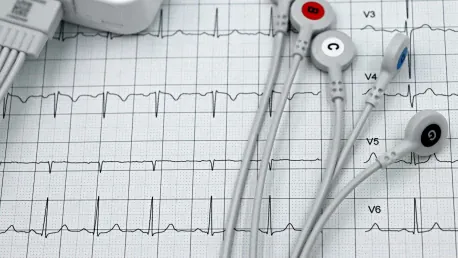The field of cardiology is undergoing a significant transformation, thanks to groundbreaking advancements in medical physics. These innovations are not only enhancing diagnostic precision but also improving treatment efficacy, ultimately leading to better patient outcomes. Among the stellar developments in this domain, cardiac imaging, computational modeling, and novel therapeutic methods stand at the forefront, revolutionizing how cardiology is understood and practiced. As cardiologists and medical physicists collaborate more closely, the integration of advanced technologies in clinical settings becomes increasingly seamless. This synergy is paving the way for a new era of cardiology—one that is more precise, personalized, and effective.
The Role of Advanced Imaging Technologies
One of the most exciting advancements propelling the field of cardiology forward is the use of hyperpolarized MRI to monitor cardiac metabolism. Traditional MRI, long a staple for assessing heart structure and function, has seen its capabilities exponentially extended. Comprehensive in its details is the hyperpolarized MRI, which allows for the real-time visualization of metabolic processes within the heart. Damian Tyler from the University of Oxford has been a pioneering figure in this technological leap, enhancing the sensitivity to 13C-enriched tracers by more than 10,000 times. This extraordinary increase offers a new look into the intricate metabolic reactions that underpin cardiovascular health.
Tyler’s research zeros in on pyruvate, a compound that plays a central role in glucose metabolism. By using hyperpolarized 13C MR spectroscopy, his team can precisely identify variations in metabolites such as 13C-bicarbonate and 13C-lactate in subjects with and without type 2 diabetes. These findings open the door to using the bicarbonate-to-lactate ratio as a novel diagnostic marker. This could revolutionize early detection and treatment planning for heart disease, providing clinicians with a robust tool for nuanced metabolic analysis. Beyond this, hyperpolarized MR imaging shows promise in detecting inflammation after heart attacks, elucidating drug mechanisms, speeding up drug discovery, and guiding therapeutic interventions by evaluating cardiac perfusion following heart attacks.
Innovations in Cardiac Treatments
While advancements in imaging represent a significant leap forward, innovations in cardiac treatments driven by medical physics are equally transformative. Among the remarkable developments is a bio-inspired pacemaker designed to treat heart failure by restoring the natural synchronization between the heart and lungs—a phenomenon known as respiratory sinus arrhythmia (RSA). Ashok Chauhan from Ceryx Medical has presented this cutting-edge technology, which offers hope for a fundamentally new approach to managing heart failure. The pacemaker continuously monitors the cardiorespiratory system in real-time, generating precise stimulation signals to resynchronize the heart and lungs, mimicking their natural coordination.
Initial trials in large animals have shown promising results, indicating that RSA pacing can significantly enhance cardiac output and ejection fraction compared to traditional constant pacing. Human trials are now underway to determine the safety and effectiveness of this groundbreaking technology. Should these trials prove successful, this bio-inspired pacemaker could emerge as a game-changing treatment option for heart failure patients, greatly improving their quality of life and reducing the likelihood of complications. This innovative approach holds the potential to address a critical gap in heart failure treatment, offering a solution adapted to the biological rhythms of the human body.
Addressing Gender Disparities in Cardiac Diagnostics
One poignant issue in the realm of cardiology is the persistent diagnostic disparity between men and women, particularly concerning heart attacks. Women are significantly more likely to be misdiagnosed and receive less aggressive treatment than men, highlighting a critical area in need of improvement. Hannah Smith from the University of Oxford has been at the forefront of addressing these disparities, focusing on the anatomical and physiological differences that influence electrocardiogram (ECG) readings, a primary diagnostic tool for heart attacks.
Smith has developed a sophisticated computational tool that reconstructs torso ventricular anatomy from MRI images, helping identify gender-based differences in ECG measurements. Her research reveals that men tend to have longer QRS complex durations due to larger heart volumes. Consequently, women would need a substantial percentage increase in QRS duration to be flagged as abnormal. Additionally, the ST segment amplitude—a key ECG measure for diagnosing heart attacks—is generally lower in women. This implies that overweight women would require a significantly larger increase in ST amplitude to be classified as elevated. These findings underscore the importance of customizing diagnostic tools to account for gender differences, which is essential for reducing misdiagnosis and providing more precise and personalized care for all patients.
The Intersection of Medical Physics and Other Vital Organ Systems
The field of cardiology is experiencing a profound transformation, driven by groundbreaking advancements in medical physics. These innovations are significantly enhancing diagnostic accuracy and improving treatment outcomes, which in turn leads to better patient care. Among the most notable developments in this area are advancements in cardiac imaging, computational modeling, and new therapeutic approaches. These technologies are redefining the entire practice of cardiology.
Cardiac imaging technologies have improved the ability to visualize the heart and its structures in unprecedented detail, allowing for more accurate diagnosis of heart conditions. Computational modeling enables the simulation of cardiac functions and diseases, offering valuable insights that enhance diagnostic and therapeutic strategies. Additionally, novel therapeutic methods, which include minimally invasive procedures and cutting-edge medical devices, are improving treatment success rates and patient recovery times.
The collaboration between cardiologists and medical physicists is becoming increasingly close-knit, leading to a more seamless integration of advanced technologies in clinical settings. This synergy is ushering in a new era of cardiology that is not only more precise and personalized but also far more effective in addressing the diverse needs of patients. As these innovations continue to evolve, the future of cardiology looks promising, with the potential for even greater advancements in patient care and treatment efficacy.









